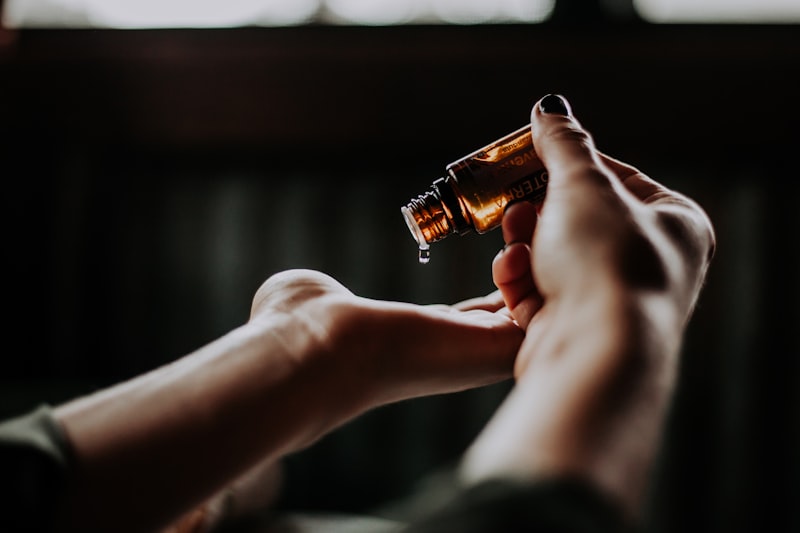Thinking of welcoming a hermit crab into your home? These fascinating creatures make for delightful pets with their unique personalities and low-maintenance care needs. Whether you’re a seasoned pet owner or new to the world of hermit crabs, understanding their care requirements is essential for their well-being.
Habitat Setup: Begin with a suitable habitat—a glass or plastic tank with ample space for climbing and exploring. A mix of sand and coconut fiber substrate mimics their natural environment, providing both moisture retention and digging opportunities. Ensure the tank has a secure lid to prevent escapes and maintain humidity levels around 70-80%.
Temperature and Humidity: Hermit crabs thrive in warm, humid conditions. Aim for a temperature range of 75-85°F (24-29°C) during the day, with a slight drop at night. Maintain humidity with regular misting and a shallow water dish for drinking and soaking. Use a thermometer and hygrometer to monitor conditions regularly.
Diet: These omnivorous creatures enjoy a varied diet. Offer commercial hermit crab food supplemented with fresh fruits, vegetables, and occasional protein sources like cooked egg or fish. Provide calcium-rich foods such as cuttlebone or crushed eggshells for their shell health.
Handling and Socialization: While hermit crabs don’t require regular handling like some pets, gentle interactions can help them acclimate to your presence. Always handle them carefully and avoid picking them up by their shells, as this can cause injury. Respect their need for quiet and darkness during molting periods.
Health and Maintenance: Keep their habitat clean by removing uneaten food and replacing water regularly. Watch for signs of illness such as lethargy or changes in shell appearance. Ensure shells are available in various sizes for them to change into as they grow.
Conclusion: Providing proper care ensures your hermit crab enjoys a long, healthy life. By creating a habitat that mimics their natural surroundings and meeting their dietary and environmental needs, you’ll be rewarded with a fascinating companion that thrives in your care.
Mastering Hermit Crab Care: Essential Tips and Tricks
Firstly, understanding the habitat requirements is crucial. Hermit crabs need a properly sized tank with enough space to roam and explore. The tank should also have a lid to maintain humidity levels, as these creatures breathe through gills and need humid air to survive.
Choosing the right substrate is another vital aspect of hermit crab care. A mix of sand and coconut fiber works well, as it mimics their natural environment. This substrate also helps maintain humidity and allows the crabs to dig and molt comfortably.
Maintaining humidity levels is key to their health. Hermit crabs breathe through modified gills, so the tank should be kept humid (around 70-80%) using a spray bottle or a humidity gauge. Providing a shallow dish of dechlorinated water allows them to hydrate and replenish moisture.
Temperature control is equally important. Hermit crabs thrive in temperatures between 75-85°F (24-29°C). Using a thermometer helps monitor the tank’s temperature accurately, ensuring it stays within the optimal range.
Diet plays a significant role in their well-being. These omnivorous creatures enjoy a varied diet of fresh fruits, vegetables, and proteins such as cooked chicken or fish. Calcium supplements are also essential to support their exoskeleton health.
Creating a stimulating environment encourages natural behaviors. Adding climbing structures, like driftwood or rocks, and providing shells of various sizes for them to change into as they grow, promotes physical activity and mental stimulation.
Lastly, regular maintenance and observation are crucial. Cleaning the tank regularly, removing any uneaten food, and observing their behavior for signs of stress or illness are essential practices for responsible hermit crab ownership.
By implementing these essential tips and tricks, you’ll be well on your way to mastering hermit crab care and ensuring a happy, healthy life for your fascinating pets.
The Ultimate Beginner’s Guide to Hermit Crab Care

Hermit crabs are not your typical pets. They require a habitat that mimics their natural environment, which includes a mix of land and water. A proper tank setup is crucial, with a substrate that allows them to burrow and molt comfortably. Coconut fiber or sand works well for this purpose, providing stability and a natural feel.
Temperature and humidity levels are critical factors in hermit crab care. These creatures thrive in warm, humid conditions similar to their tropical homes. Aim for a temperature range of 75-85°F (24-29°C) and a humidity level of 70-80%. This can be achieved with a heat mat or lamp for warmth and a spray bottle for misting the tank regularly.
Feeding your hermit crabs a balanced diet is essential for their health and well-being. They are scavengers by nature, so offering a variety of foods is key. Commercial hermit crab food, fresh fruits and vegetables (like apples, carrots, and leafy greens), and occasional treats like dried shrimp or mealworms can make up their diet. Always ensure fresh water is available, preferably treated with a dechlorinator and offered in a shallow dish for easy access.
Hermit crabs also need places to hide and explore within their habitat. Providing them with shells of various sizes (they will change shells as they grow), rocks, and branches creates a stimulating environment. Avoid using painted or chemically treated decorations that could harm them.
Lastly, observing your hermit crabs regularly is crucial. They molt to grow, shedding their exoskeleton periodically. During this time, they may bury themselves for days or even weeks. It’s important not to disturb them during molting, as it is a vulnerable time for them.
By understanding and meeting these basic needs, you can create a thriving environment for your hermit crabs. Enjoy watching these fascinating creatures as they explore, molt, and interact in their unique habitat.
Hermit Crab Care 101: Everything You Need to Know
Taking care of hermit crabs can be an incredibly rewarding experience, but it requires a bit of knowledge and effort to ensure they thrive in their habitat. These fascinating creatures, known for their unique habit of using discarded shells as their homes, need specific conditions to stay healthy and happy.
Firstly, setting up the right habitat is crucial. Hermit crabs need a spacious tank with plenty of room to explore and molt. A glass aquarium with a secure lid is ideal to maintain humidity, which is vital for their well-being. Make sure to include substrate such as coconut fiber or sand, providing a natural environment that mimics their native beaches.
Temperature and humidity levels are key factors in hermit crab care. Aim for temperatures between 75-85°F (24-29°C) and humidity levels around 70-80%. You can maintain humidity by spraying the tank with water daily and using a hygrometer to monitor levels accurately.
Feeding your hermit crabs a balanced diet is essential for their health. They are omnivores, so offering a variety of foods is best. This can include commercial hermit crab food, fresh vegetables like carrots and lettuce, fruits like apples and bananas, and occasional protein sources such as cooked chicken or fish.
Handling hermit crabs requires gentle care. They are sensitive to rough handling and prefer to be left alone most of the time. If you need to handle them, do so sparingly and always make sure your hands are clean and free of any chemicals or lotions that could harm them.
Providing proper care for hermit crabs involves creating a suitable habitat with the right conditions, maintaining temperature and humidity levels, offering a varied diet, and handling them with care when necessary. By meeting these needs, you can enjoy watching these intriguing creatures thrive in their environment.
Step-by-Step Guide to Creating the Perfect Habitat for Your Hermit Crab

Firstly, start with the enclosure itself. A glass aquarium is ideal as it provides good visibility and maintains humidity levels better than other materials. Ensure the tank is large enough to accommodate multiple hiding spots and climbing areas, as hermit crabs are active and curious creatures.
Next, line the bottom of the tank with a substrate that retains moisture well, such as coconut fiber or sand mixed with calcium carbonate. This substrate should be at least several inches deep to allow for burrowing and tunneling, which are natural behaviors for hermit crabs.
Provide a variety of hiding places and climbing structures within the tank. This could include natural materials like driftwood, rocks, and non-toxic plants. These additions not only simulate the crab’s natural habitat but also offer enrichment and stimulation.
Maintaining proper humidity levels is crucial for the health of your hermit crab. Aim for humidity levels around 70-80% by misting the enclosure daily and using a hygrometer to monitor levels. A shallow dish of dechlorinated water should also be available at all times for drinking and bathing.
Temperature regulation is equally important. Keep the tank between 75-85°F (24-29°C) during the day and slightly cooler at night. Use a heat lamp or heating pad designed for reptile terrariums to achieve and maintain these temperatures.
Lastly, ensure your hermit crab’s diet is varied and nutritious. Offer a combination of commercial hermit crab food, fresh fruits and vegetables, and occasional protein sources like boiled egg or mealworms. Always provide a calcium supplement to support shell health and molting.
Frequently Asked Questions
How do you set up a habitat for hermit crabs?
Learn how to set up a habitat for hermit crabs effectively with our concise guide. Discover essential steps and key elements for creating a suitable environment to ensure your hermit crabs thrive.
How often should you clean a hermit crab tank?
Discover the optimal cleaning schedule for maintaining a healthy hermit crab habitat. Learn how often to clean a hermit crab tank to ensure a safe and comfortable environment for your pet.
What temperature and humidity levels do hermit crabs need?
Learn about the ideal conditions for hermit crabs. Discover the recommended temperature range of 75-85°F (24-29°C) and humidity levels around 70-80%. Maintaining these conditions helps ensure the well-being and health of your pet hermit crab.
What are common health issues in hermit crabs and how do you treat them?
Learn about common health issues in hermit crabs and how to treat them effectively with our concise FAQ. Discover essential care tips to ensure your hermit crab’s well-being.
What do hermit crabs eat and drink?
Find out what hermit crabs eat and drink to keep them healthy and happy. Learn about their dietary needs and hydration requirements to ensure proper care.


